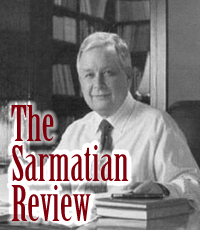| This Issue | Back Issues | Editorial Board | Contact Information |

Yearbook of Polish Foreign Policy
2004
Edward J. Rozek
Edited by Barbara Wizimirska. Warsaw: Polish Foreign Ministry (aleksandra.zieleniec@msz.gov.pl), 2005. 324 pages. ISSN 1233-9903. Paper. Contains a list of personnel in Polish foreign service.
Yearbook of Polish Foreign Policy 2004 is well edited. The editor-in-chief of the series, Roman Kuzniar, and his editorial board are to be complimented for that.
The book is divided into six sections, each containing several articles. Section 1, “Vectors,” consists of a speech by Minister of Foreign Affairs Włodzimierz Cimoszewicz, an article on national security, and an article on the war in Iraq. Section 2 deals with the European Union and Poland’s place in it. Section 3, “Problems,” consists of four general articles on international relations. The articles in Section 4 discuss relations between Poland and the United States, Germany, France, Asia, and the Pacific countries, and, finally, the Visegrad group. Section 5 is a summary of Poland’s foreign relations in 2003. Section 6, for the first time since the Polish Foreign Office began publishing the Yearbook, lists all ninety-nine embassies and a similar number of consulates that Poland maintains around the world. Overall, the articles are well written and informative.
The Yearbook’s weaknesses lie in its serious omissions. There is no discussion of Russo-Polish relations, although Russia is Poland’s neighbor and, even after the end of the Warsaw Pact, has continued to exert an enormous influence on Polish affairs. Although Poland’s economic relations with foreign countries are under consideration in several articles, no mention is made of Poland’s internal economy, which the successive postcommunist governments have startlingly dismantled. Today Poland is the poorest country in EU, with 18 percent unemployment and 17 percent of the population under the poverty level. Many of the unemployed are young people, who are becoming restless and are looking for opportunities to emigrate to western European countries or the United States.
Strictly speaking, the title, Yearbook of Polish Foreign Policy, is a misnomer. In the fifteen years since the country achieved its independence from the Soviet Union, that policy has been shaped by a handful of Moscow-trained and Moscow-influenced postcommunists: President Aleksander Kwaśniewski, former prime minister and foreign minister Włodzimierz Cimoszewicz, former prime minister and speaker of the Sejm Józef Oleksy, prime minister Leszek Miller, president of the Senate Longin Pastusiak, a number of top officials of the ministry of foreign affairs, and a number of ambassadors who are trusted by the postcommunists. With the exception of the short periods when Jan Olszewski and Jerzy Buzek were prime ministers, the foreign policy of the Third Republic has been hijacked by former communists. It was only at the end of 2005 that Polish patriots (elected to the Sejm and the Presidency in 2005) were in charge of the country’s foreign policy. Not until 2006 will it be possible to consider the nation’s foreign policy truly Polish.
In addition to being a member of the Visegrad group, which is briefly considered in one article, Poland is a member of NATO. Her representatives participate in various conferences and operations of that organization, yet Poland’s role in NATO is not discussed in the book.
Poland is also a member of the United Nations. In 2004 it became a member of the European Union. I personally hope that the Polish voters will follow the example of the French and Dutch voters and decide to withdraw by not ratifying the EU’s constitution, which was hastily prepared, mostly by French politicians like Valery Giscard d’Estaing and Jacques Chirac, in such a manner as to give France the preponderance of power. Various ancient European nations, whose history goes back more than a thousand years, cannot be unceremoniously uprooted and made part of an organization that does not, through its projected constitution, take their traditions into account.
The former communists, who began their lives under Soviet occupation, were easily persuaded to consider the European Union a substitute for the Soviet Union. By doing so, they sacrificed Poland’s interests on many occasions. Among other problems, the European Union presupposes open borders, which means that terrorists from the Middle East or Asia can move across Europe without being obliged to identify themselves to any European authority. This is potentially an enormous security problem for Poland and for all members of the European Union.
Being a member of NATO is sufficient for Poland’s security. Poland’s greatest enemy is geography. Placed between Russia and Germany, Poland has had to devote a greater percentage of her economic resources to provide for the nation’s security than the contries on the western and northern rim of Europe.
Another of the book’s weakness is the fact that there is only a cursory discussion of Poland’s relations with Asian nations such as China with a population of 1.3 billion, India with a population of over a billion, Indonesia, and the Philippines. There is a lack of vision in this book, as befits the communist-bred bureaucracy, used to do as little as possible and “not to rock the boat ” so as to retain their armchair positions in the ministries, embassies, and consulates.
The recently elected leaders Lech Kaczyński and Kazimierz Marcinkiewicz face the formidable task of reshaping Poland’s foreign relations with a view of providing security for the nation. The new Minister of Foreign Affairs Stefan Meller is better qualified than any of his predecessors to shape the foreign policy of Poland. ∆
Back to the April 2006 Issue
The Sarmatian Review
sarmatia@rice.edu
Last updated 4/12/06